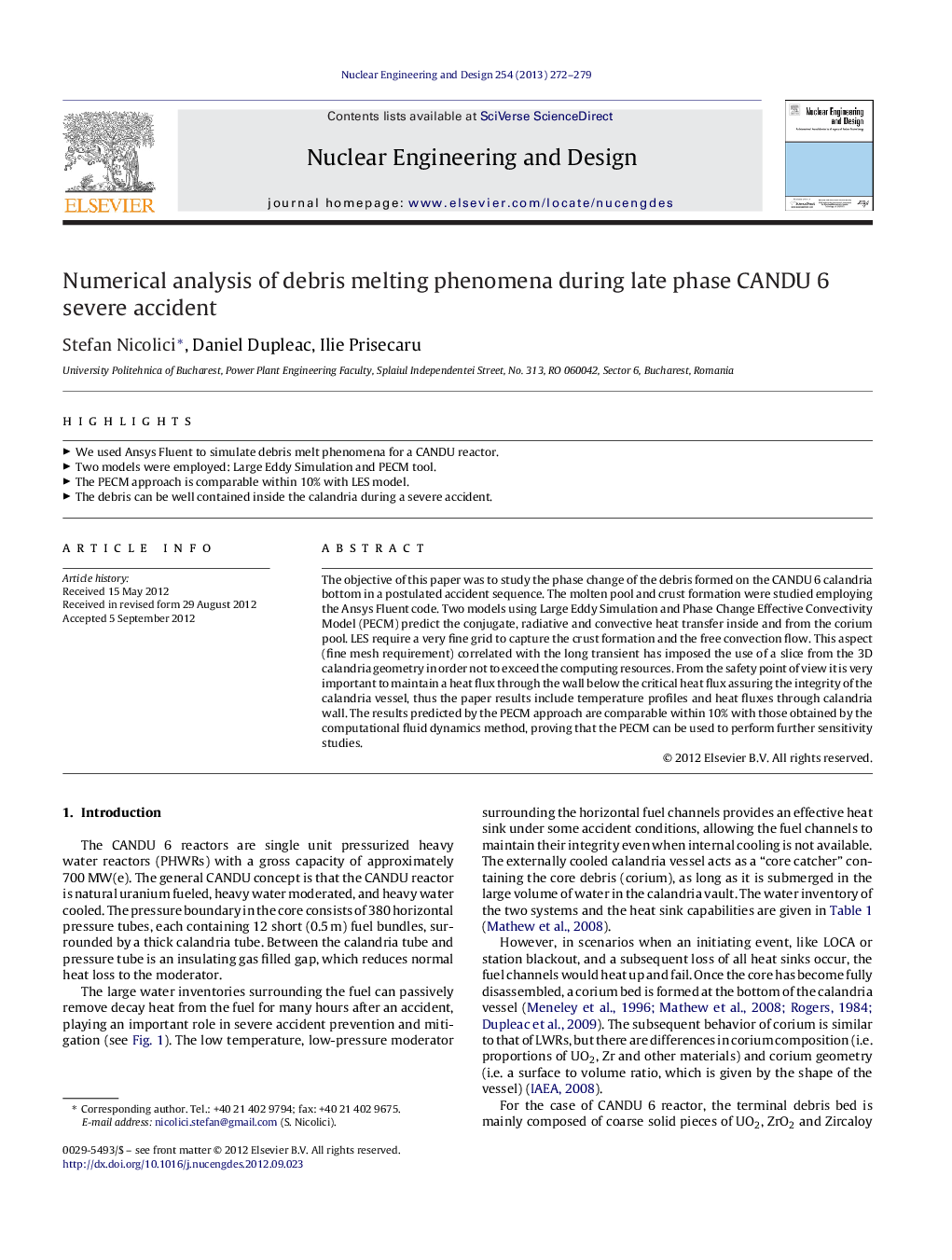| کد مقاله | کد نشریه | سال انتشار | مقاله انگلیسی | نسخه تمام متن |
|---|---|---|---|---|
| 296830 | 511742 | 2013 | 8 صفحه PDF | دانلود رایگان |

The objective of this paper was to study the phase change of the debris formed on the CANDU 6 calandria bottom in a postulated accident sequence. The molten pool and crust formation were studied employing the Ansys Fluent code. Two models using Large Eddy Simulation and Phase Change Effective Convectivity Model (PECM) predict the conjugate, radiative and convective heat transfer inside and from the corium pool. LES require a very fine grid to capture the crust formation and the free convection flow. This aspect (fine mesh requirement) correlated with the long transient has imposed the use of a slice from the 3D calandria geometry in order not to exceed the computing resources. From the safety point of view it is very important to maintain a heat flux through the wall below the critical heat flux assuring the integrity of the calandria vessel, thus the paper results include temperature profiles and heat fluxes through calandria wall. The results predicted by the PECM approach are comparable within 10% with those obtained by the computational fluid dynamics method, proving that the PECM can be used to perform further sensitivity studies.
► We used Ansys Fluent to simulate debris melt phenomena for a CANDU reactor.
► Two models were employed: Large Eddy Simulation and PECM tool.
► The PECM approach is comparable within 10% with LES model.
► The debris can be well contained inside the calandria during a severe accident.
Journal: Nuclear Engineering and Design - Volume 254, January 2013, Pages 272–279